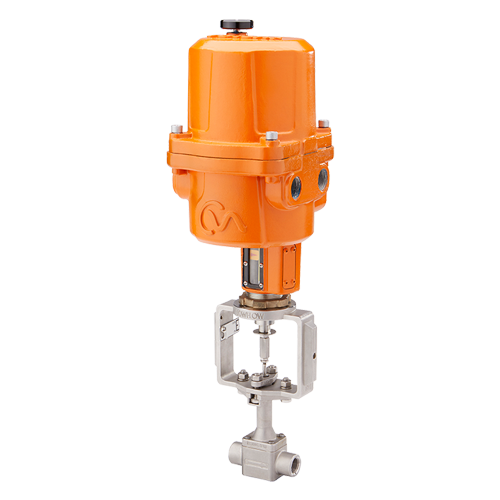Optimizing System Control with High-Performance Control Valves
Optimizing System Control with High-Performance Control Valves
Blog Article

Maximize Energy Cost Savings and Convenience With Advanced Structure Automation Controls
In the realm of contemporary design and center management, the combination of innovative structure automation regulates stands as an essential development. By using the power of automation, buildings can adjust, respond, and progress in means that were as soon as inconceivable.
Energy Performance Advantages
Power effectiveness benefits can dramatically minimize power consumption and functional expenses in structures. Energy-efficient systems, such as sophisticated building automation controls, can maximize the use of resources like air conditioning, illumination, and heating, leading to lower power expenditures over time.
Moreover, enhanced power effectiveness can prolong the life-span of structure devices and systems. By operating more successfully, cooling and heating systems, lighting fixture, and various other building parts experience much less damage, resulting in reduced upkeep and replacement expenses. In addition, energy-efficient structures commonly command greater residential property worths and rental prices, providing lasting financial advantages to owners.
Moreover, power effectiveness can enhance passenger convenience and productivity. Effectively regulated interior settings with optimal lighting and thermal problems create a more conducive and pleasurable workspace, bring about improved worker complete satisfaction and performance. In general, the power performance benefits connected with advanced building automation controls are complex, encompassing cost savings, environmental stewardship, and resident wellness.
Boosted Convenience Control
Enhancing convenience control in building settings calls for an innovative assimilation of sophisticated automation systems for optimum occupant well-being. By making use of sophisticated structure automation controls, centers can customize the interior setting to fulfill the specific needs and preferences of occupants. These systems enable specific regulation of lighting, temperature level, and air flow, developing a comfy and effective ambience. Owner satisfaction and productivity are very closely connected to thermal comfort, making it vital to have systems in position that can adjust to changing problems in real-time.
Boosted comfort control exceeds standard temperature changes. It includes features such as personalized settings, tenancy sensing units, and natural light usage to create a dynamic and responsive atmosphere. By incorporating these advanced controls, structures can not only boost comfort yet likewise improve power efficiency by maximizing system operations based upon actual tenancy and usage patterns. Eventually, focusing on resident comfort through sophisticated automation systems results in an extra pleasurable and much healthier interior setting.
Operational Effectiveness Improvements

Additionally, the execution of real-time tracking and analytics tools allows structure drivers to identify power inefficiencies and functional anomalies quickly. By constantly checking energy usage patterns and system efficiency metrics, adjustments can be made in real-time to optimize energy usage and make certain peak operational effectiveness. control valves. In addition, incorporating demand reaction methods right into structure automation controls can further boost functional performance by dynamically changing energy usage based on grid conditions and prices signals
Indoor Environment Optimization
Effective indoor climate optimization is a fundamental facet of building automation controls, guaranteeing passengers' convenience and health while optimizing power financial savings. By utilizing advanced sensors and controls, building automation systems can continuously keep an eye on and change temperature, humidity levels, air quality, and air flow to create an optimum interior atmosphere. Preserving consistent and comfy problems not only improves resident fulfillment yet other likewise increases productivity and overall health.
Interior environment optimization likewise plays a critical function in energy efficiency. By fine-tuning home heating, air conditioning, and ventilation systems based on real-time information and occupancy patterns, constructing automation controls can significantly lower energy consumption - control valves. For example, carrying out approaches such as demand-controlled air flow and thermal zoning can help decrease energy waste while ensuring that each location of the building obtains the needed conditioning.

Sustainable Environment Creation
Structure automation regulates not just enhance indoor climate problems for power effectiveness and resident comfort yet likewise lay the foundation for creating a lasting atmosphere through critical management of sources and systems. By integrating advanced structure automation modern technologies, such as sensors, actuators, and intelligent software, centers can adjust and check power usage in real-time to reduce waste and reduce their carbon impact. These systems enable anticipating maintenance, determining prospective problems before they rise and optimizing equipment efficiency to enhance durability and efficiency.
In addition, sustainable environment creation prolongs beyond power administration to encompass water preservation, waste reduction, and interior air quality enhancement. Building automation controls can manage water usage, detect leaks, and ensure appropriate garbage disposal methods, adding to overall sustainability initiatives. In addition, by checking and regulating ventilation and purification systems, these modern technologies improve resident wellness and productivity while decreasing power intake connected with HVAC operations.
Verdict
To conclude, advanced building automation manages deal considerable advantages in regards to energy savings, comfort control, functional efficiency, interior environment optimization, and creating a sustainable atmosphere. By applying these controls, structures can accomplish optimal performance while minimizing power consumption and enhancing passenger convenience. It appears that making use of innovative automation technology is vital in enhancing structure performance and creating a more sustainable future.
Energy efficiency advantages can dramatically lower power intake and functional expenses in buildings. On the whole, the power performance advantages linked with innovative structure automation controls are complex, encompassing cost financial savings, ecological stewardship, and owner health.
Additionally, incorporating need action techniques into structure automation controls can additionally enhance operational effectiveness by dynamically changing power usage based on grid problems and pricing signals.
Structure automation manages not only maximize indoor environment conditions for power effectiveness and occupant convenience however additionally you can look here lay the foundation for developing a lasting environment with tactical management of systems and resources.In final thought, progressed building automation controls deal significant benefits in terms of power cost savings, comfort control, visit homepage operational performance, indoor climate optimization, and developing a sustainable atmosphere.
Report this page